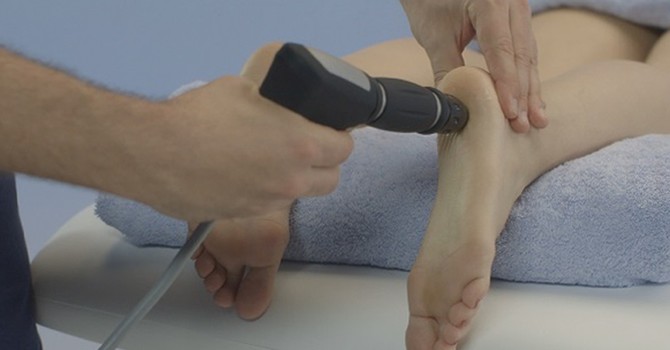
In today’s digital world, it’s nearly impossible to avoid smartphones, laptops, and tablets. We use them for work, staying connected with family and friends, entertainment, and everything in between. While technology has made life easier in many ways, it has also given rise to a modern health problem: tech neck.
Tech neck refers to the strain and discomfort that develop in the neck, shoulders, and upper back from constantly looking down at devices. With the average American spending over 5–7 hours a day on a smartphone (not counting computer use), this issue is more widespread than ever. Chiropractors are seeing an increase in patients who experience chronic neck pain, tension headaches, and even nerve irritation directly linked to poor posture from technology use.
In this blog post, we’ll break down:
- What tech neck is
- Why it happens
- Common symptoms of tech neck
- How to prevent and correct tech neck with chiropractic care and lifestyle changes
What Exactly Is Tech Neck?
Tech neck, also known as text neck, refers to the posture problem caused by frequently bending your head forward to look at a screen. While this may seem harmless at first, the neck is designed to support the head in an upright position, not to tilt forward at sharp angles for extended periods.
Here’s the problem: the human head weighs about 10–12 pounds when it’s upright. But for every inch you tilt your head forward, the pressure on your neck doubles or even triples. At a 45-degree angle, typical when texting or scrolling, the effective weight on your cervical spine can reach up to 50 pounds.
Imagine holding a 50-pound weight with your arms all day. Your muscles would be exhausted. The same thing happens to the muscles, ligaments, and discs in your neck when you maintain poor posture with technology.
Symptoms of Tech Neck
The early signs of tech neck may be subtle, but over time, the condition can progress into chronic pain and even long-term spinal changes.
Common symptoms include:
- Neck stiffness and soreness, especially after long periods of phone or computer use
- Sharp or aching pain in the shoulders and upper back
- Frequent headaches or migraines, often caused by tension in the cervical spine
- Reduced range of motion that makes it difficult to turn the head fully
- Tingling or numbness in the arms and hands, signaling that nerves may be compressed
- Poor posture, such as rounded shoulders, forward head carriage, or a noticeable hunch
Ignoring these symptoms can allow them to worsen, potentially leading to disc degeneration, arthritis, or herniated discs in the cervical spine.
How Tech Neck Affects Your Overall Health
Tech neck isn’t just a minor inconvenience; it can actually affect your whole body, hindering your quality of life.
Here’s how:
- Spinal joint restrictions put stress on your nervous system, which controls every function in your body.
- Chronic pain and stiffness can reduce your ability to exercise, stay active, or enjoy daily life.
- Headaches and fatigue can impact productivity, focus, efficiency, and mood.
- Poor posture habits can eventually lead to permanent structural changes.
In other words, tech neck isn’t just about your neck; it’s about your long-term health and overall function.
Preventing Tech Neck: Simple Lifestyle Adjustments
Don’t worry! You don’t have to give up your devices to protect your neck. A few mindful changes can go a long way toward prevention.
Try these six tips:
- Raise your screen: Hold your phone at eye level and adjust your computer monitor so the top third is at eye height
- Take breaks: Follow the 20-20-20 rule: every 20 minutes, take 20 seconds to look 20 feet away and move your body
- Improve your posture: Keep your shoulders relaxed, back straight, and ears aligned with your shoulders
- Strengthen neck and back muscles: Gentle stretches and strengthening exercises can support proper alignment
- Use ergonomic workstations: Invest in a supportive chair, standing desk, or laptop stand
- Be mindful of screen time: Limit unnecessary scrolling and take screen-free breaks throughout your day
These habits not only help reduce tech neck but also improve posture and energy.
How Chiropractic Care Corrects Tech Neck
While lifestyle changes are important, once tech neck has established itself, most people require professional help to reverse its effects. Chiropractors address the root cause of pain rather than just masking symptoms.
Here’s how chiropractic care can help:
Chiropractic Adjustments
Gentle chiropractic adjustments and spinal manipulations realign the cervical spine, reducing pressure on nerves and restoring balance to the neck. Patients often experience immediate relief from tension and improved range of motion.
Dry Needling
Dry needling helps alleviate neck pain associated with tech neck by targeting tight, overworked muscles, reducing trigger points, improving blood flow, and restoring mobility, ultimately easing tension and promoting faster healing and improved posture.
Postural Correction
Your chiropractor can identify postural imbalances caused by device use and develop a customized plan to restore proper balance over time.
Soft Tissue Therapy
Tech neck often involves tight muscles in the neck, shoulders, and upper back. Soft tissue treatments work to relax these areas and improve circulation.
Functional Rehab
Strengthening weak muscles and stretching tight ones is essential for lasting relief. Chiropractors often prescribe functional rehabilitation to support spinal alignment and prevent future issues, ensuring patients can continue their routine with proper function.
Lifestyle Coaching
From ergonomics to daily posture habits, chiropractors provide guidance to help you maintain long-term neck health.
Visit Our Rochester Chiropractic Clinic & Let’s Control Your Tech Neck Symptoms
Tech neck is one of the most common modern health issues, affecting people of all ages, but it’s also one of the most preventable and treatable. By becoming aware of your posture, making minor daily adjustments, and working with our family chiropractic care team, you can protect your neck, spine, and overall comfort.
Our devices may be here to stay, but that doesn’t mean your neck pain is. If you’re struggling with symptoms of tech neck, we’re prepared to help you naturally realign, recover, and restore your health.

Nate Skare
Contact Me



